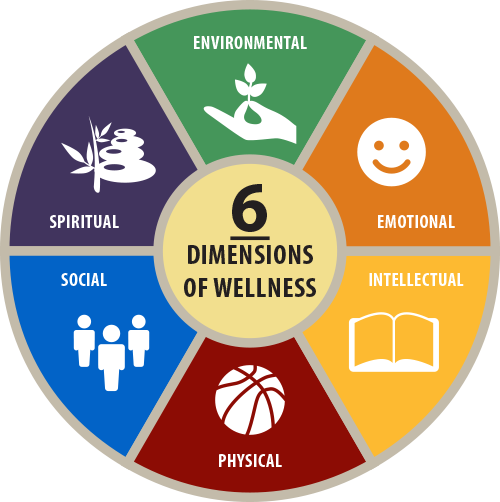The New Year is here and for a host of Kiwi’s that means a renewed focus on health and wellbeing. While jotting down a few goals in your journal is definitely a start, to really elevate your lifestyle to the next level it’s important to have an in-depth understanding of the six dimensions of wellness.
Yes, there’s six of them. And together they unite to create a holistic, multi-dimensional approach to wellness. It can seem a little overwhelming, so to get you started we’ve put together a beginner’s guide to exploring the six dimensions of wellness.
The basics
First things first, what is wellness? While an explanation could warrant an article in itself, we’ll keep things simple with this concise explanation from the National Wellness Institute:
“Wellness is an active process through which people become aware of, and make choices toward, a more successful existence.”

Introducing the six dimensions
The “six dimensions” theory was borne back in the late 70s, when well-regarded lifestyle coach Dr. Bill Hettler developed a wellness paradigm based on six key pillars. All complement one another to create a life that’s balanced, fulfilling and prosperous. It’s important to give each dimension adequate attention, as an imbalance in one area can throw off the equilibrium of other dimensions.
Physical
This is one of the easiest dimensions to master, as your body is a tangible medium to measure progress. This isn’t about perfection, and it’s definitely not about banishing wrinkles or getting rid of love handles. It’s about embracing a healthy lifestyle and respecting your body with regular exercise, proper nutrition, adequate sleep and a general avoidance of harmful habits like smoking, overeating, under-exercising and so on.
Emotional
Emotional wellness digs a little deeper as it requires a deeper understanding of the psyche. The goal is to maintain a healthy relationship with your emotional presence, and be comfortable and accepting of your own thoughts and feelings. As well as an awareness of your emotions it’s important to be able to express them to others when necessary.
Spiritual
Whether you’re a devout Christian or an avid atheist, spiritual wellness is a dimension that can be applied to any lifestyle. This means venturing beyond the physical realm of your existence and embracing the concept that your life has meaning and purpose. Whether this means church, yoga practice, volunteer work or something else entirely, spirituality can come in a kaleidoscope of shapes and forms.
Intellectual
From learning a new language to staying up to date with the news, intellectual wellness is about flexing your mind and opening yourself up to new cognitive experiences. Learning is an incredibly rewarding process and goes hand in hand with problem-solving, creativity and a sense of accomplishment.
Environmental
While climate change and renewable resources are hot topics, the environmental dimension of wellness is all about respecting Mother Nature and welcoming her into your life. It’s no secret that nature is one of the most powerful medicines, so whether you stroll around the neighbourhood, tend to your garden or plan a nature centric adventure, never underestimate the healing powers of fresh air.
Social
Humans are social beings, which means it’s important to build strong relationships with others. You don’t have to be a social butterfly, but you should be making an effort to engage with others. This is especially important in the golden years, when loneliness can often emerge as an issue.
The final verdict? Don’t be too hard on yourself. Even a simply understanding of the six dimensions of wellness is enough to spark change and work towards equilibrium. And don’t forget, wellness is a conscious, proactive and self-directed journey that’s continually evolving. No matter what, it should always be positive and uplifting. This means there’s no room for guilt tripping or negativity and if you find yourself slipping up. It’s great to set goals, but not to the point that failure becomes a burden.










Join the Discussion
Type out your comment here:
You must be logged in to post a comment.